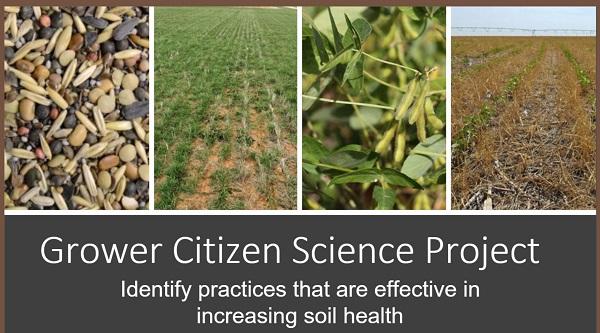
Credit: Natasja van Gestel
West Texas cotton growers face many environmental challenges, including rising temperatures, higher temperature extremes, less rainfall, and a decline in groundwater supplies. While generations of growers have accumulated considerable knowledge about addressing these and other challenges, they can benefit from learning the scientific perspective. Natasja van Gestel provides that perspective through the Grower Citizen Science Project. The primary goal of the project to identify practices that increase soil health.
The Grower Citizen Science Project is a collaboration between soil scientists and growers in the southern High Plains of Texas. Growers have collected soil samples, measured carbon dioxide fluxes, and shared yield data with scientists. Scientists have installed soil moisture and temperature sensors and analyzed nutrients, soil microbial communities, and other data and then shared their findings with growers.
Over the course of this collaboration, scientists have determined that practices such as rotating crops, planting cover crops, and keeping residue on top of the soil surface all benefit soil health. Adding residue to the soil increases organic matter and moisture levels, reduces wind and water erosion, returns nutrients to the soil, helps control weeds, and minimizes heat stress for roots and microbes. Scientists also demonstrated the benefits of no-till systems, which include higher levels of soil moisture, organic matter, and microbial biomass, as well as increased numbers of beneficial microbes, such as arbuscular mycorrhizal fungi.
By implementing these practices, which van Gestel outlines in the webcast “Grower Citizen Science Project,” growers are able to increase soil resiliency to climate extremes. This presentation will help consultants, county agents, growers, and other practitioners in the southern High Plains understand these regenerative practices.
This 27-minute presentation is available through the “Focus on Cotton” resource on the Plant Management Network. This resource contains more than 75 webcasts, along with presentations from six conferences, on a broad range of aspects of cotton crop management: agronomic practices, diseases, harvest and ginning, insects, irrigation, nematodes, precision agriculture, soil health and crop fertility, and weeds. These webcasts are available to readers open access (without a subscription).
###
The “Focus on Cotton” homepage also provides access to “Cotton Cultivated,” a new resource from Cotton Incorporated that helps users quickly find the most current cotton production information available. These and other resources are freely available courtesy of Cotton Incorporated at http://www.
Media Contact
Ashley Bergman Carlin
[email protected]
651-994-3832





